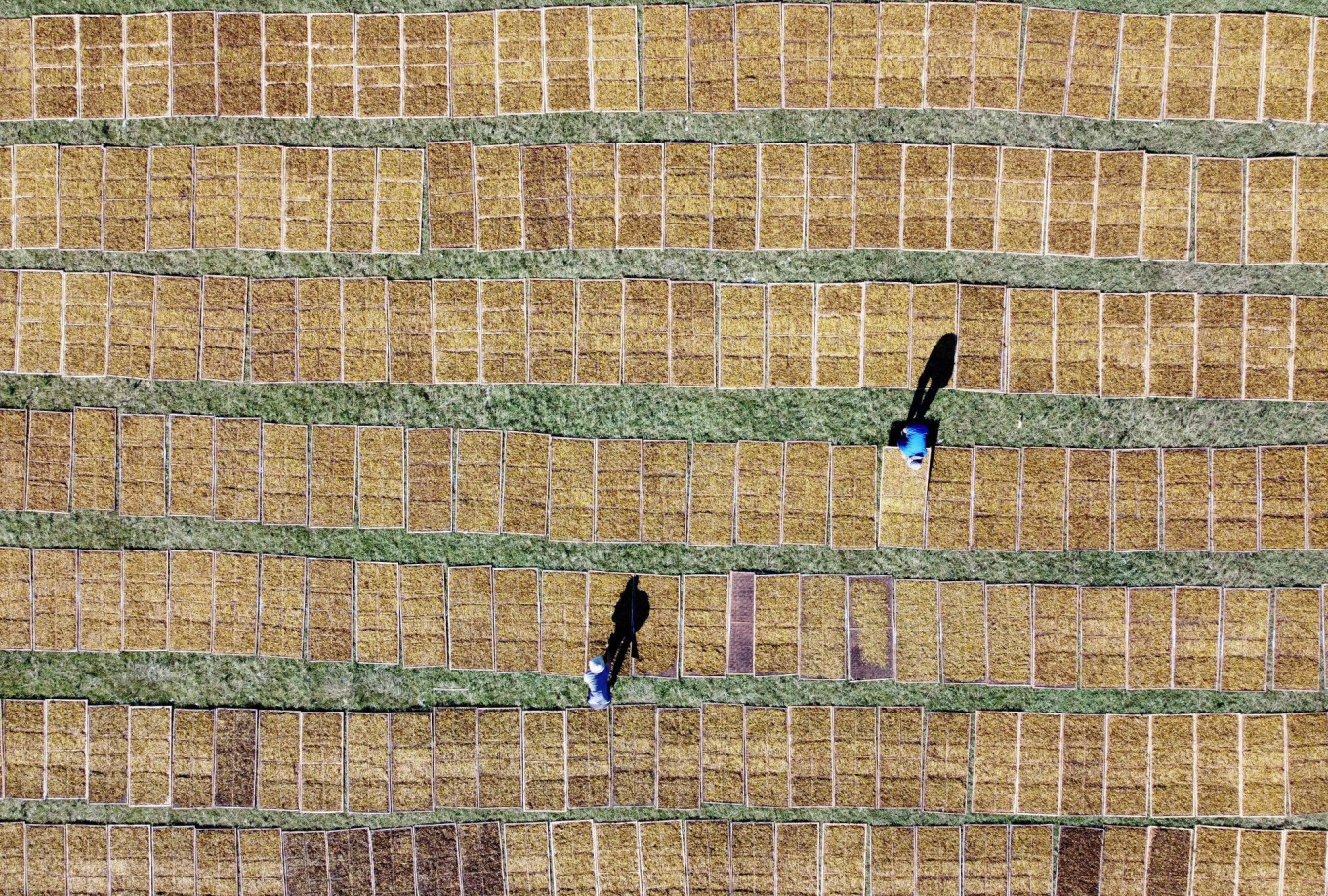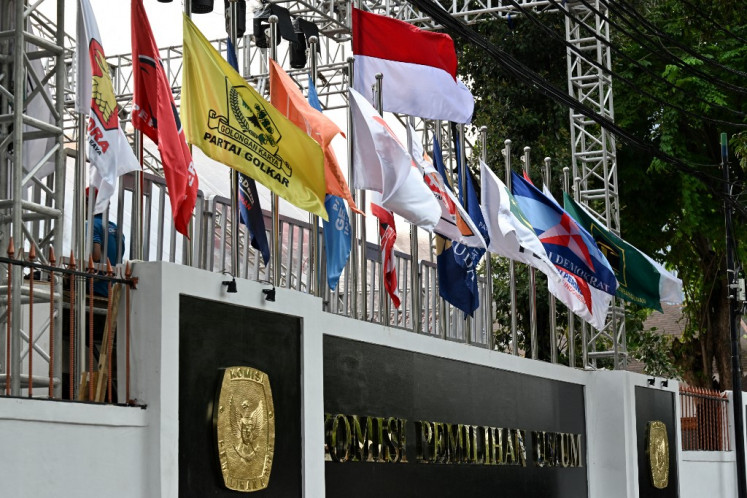Popular Reads
Top Results
Can't find what you're looking for?
View all search resultsPopular Reads
Top Results
Can't find what you're looking for?
View all search resultsContemplating the future of the tobacco industry
The government has decided to increase the cigarette excise by 10 percent (weighted average), a moderate hike compared to the double-digit increases for the last few years.
Change text size
Gift Premium Articles
to Anyone
The government has recently issued the long-awaited regulation on tobacco excise duties that will take effect from Jan. 1, 2023.
The government has decided to increase the cigarette excise by 10 percent (weighted average), a moderate hike compared to the double-digit increases for the last few years. What distinguishes the new cigarette excise from previous years is that the new excise applies to multiple years, namely for 2023-2024, instead of yearly.
The detailed provision is stated in Finance Ministerial Regulation (PMK) No. 191/2022.
As usual, the cigarette excise hike has invited pros and cons from interested parties, even though the government explained that its decision had considered various aspects, including economic and employment aspects, as well as the state revenue.
Players in the cigarette industry have often cited market conditions that have not fully recovered from the pandemic’s impacts and the potential risk of weakening purchasing power amid high inflationary pressures as reasons for their objection to the new policy.
The next question is the standard: Will the cigarette excise hike be effective in reducing cigarette consumption in Indonesia? What other policies are needed to reduce nationwide cigarette consumption, and how to prepare the future of the tobacco industry amid the growing pressure on this industry?
Indonesia is still one of the largest cigarette markets in the world, ranking third after China and India, with average sales of 300 billion cigarettes per year.
Historical data and several studies (Sunley, Yurekli, Chaloupka, 2000; De Beyer and Yurekli, 2000; Djutaharta et al, 2005; Adioetomo et al, 2005) show that demand for cigarettes is inelastic. Several cases show that increasing the price of cigarettes by increasing the cigarette excise does not significantly reduce cigarette consumption because of downtrading, or smokers switching to more affordable cigarette brands when purchasing power is under pressure. The important thing is that they can still smoke.
We see that the excise hike is one of the short-term fiscal policy instruments the government uses to try and limit the growth of the cigarette industry. This is because the decision to pass on the cigarette excise to consumers and how much to increase the selling price of a cigarette brand is entirely at the discretion of individual producers. If a producer decides to increase the price of its cigarette brands, it risks potential decline in sales; on the contrary, if the producer decides to hold the selling prices, then it is their business margins that have the potential to be eroded.
Furthermore, in our opinion, efforts to control cigarette consumption would be more effective if they incorporated basic and long-term efforts to control the smoking habit. The government has emphasized that the cigarette excise hike is aimed at reducing the prevalence of child smokers.
The government has targeted reducing the prevalence of smoking among children to 8.92 percent in 2023 and to 8.79 percent in 2024.
To put these figures into context, data from Statistics Indonesia (BPS) show that 9.98 percent of Indonesian youths aged 15-19 years were smokers in 2021. Ministry of Health data also showed a yearly increasing trend in the prevalence of child smokers, which reached 9 percent in 2021.
The increasing trend of child smokers is driven by the high number of novice smokers who start smoking at a young age. The Global Youth Tobacco Survey shows that three out of four Indonesians start smoking before they are 20. The Ministry of Health projects that the prevalence of child smokers will reach 16 percent in 2030, if it is not controlled immediately.
As such, comprehensive and continuous education about the dangers of smoking and cigarette smoke to smokers’ health and the environment, especially for child smokers, is very important.
Nonfiscal instruments that restrict promotions and access to cigarette sales points for children are needed. Restrictions, regulations and supervision on broadcast time and the content of cigarette advertisements must be seriously considered. An even more extreme measure would be for the government to impose sanctions such as withdrawing education assistance funds, for example through the Kartu Indonesia Pintar (Indonesia Smart Card), from students who smoke.
Meanwhile, on the health side, it is necessary to explore the possibility of implementing a cost-sharing policy in covering the treatment of diseases caused by smoking for BPJS Kesehatan participants who smoke. This cost-sharing mechanism can reduce the moral hazard for participants who smoke, who think they are entitled to full coverage from BPJS Kesehatan because they have paid their premiums. To illustrate, BPJS Kesehatan bears health insurance claims of between Rp 10.5 million (US$670) to Rp 15.6 trillion per year for healthcare costs related to smoking.
In addition, we think that the government needs to immediately establish a cigarette industry road map that aligns the interests of various parties and across institutional sectors. This road map is also expected to be a guideline and to provide business certainty, especially for cigarette companies so they have sufficient time to adjust their business strategy, including creating an exit strategy if market conditions and regulations are deemed to be increasingly unfavorable to the industry.
Notably, the government had issued Industry Minister Regulation No. 63/M-IND/PER/8/2015 on the 2015-2020 Tobacco Products Industry Road Map, but the Supreme Court nullified the regulation in Supreme Court Decision No. 16P/HUM/2016.
In its decision, the Supreme Court stated that the tobacco road map regulation conflicted with five higher laws, namely Law No. 36/2009 on Health, Law No. 39/1999 on Human Rights, Law No. 11/2005 on the Ratification of the International Covenant on Economic, Social and Cultural Rights, Law No. 23/2002 on Child Protection and Law No. 11/1995 on Excise.
One point that was debated at the time was the growth in cigarette production, estimated at 5-7.4 percent per year, to total 524.2 billion cigarettes in 2020. Indirectly, this growth projection would encourage greater marketing efforts so that in the end, it would increase consumption, including among children.
For the long term, the government should also think about transitioning the tobacco industry to create better jobs for the industry’s workers. Along with technological developments, tobacco plants can be used to produce a variety of derivative products other than cigarettes, including extracting vegetable proteins that can be used as animal feed, insecticides and raw materials for pharmaceutical and cosmetics products. Nevertheless, developing tobacco extraction processes to an industrial scale is still a long journey.
In sum, we hope that the government can produce a policy road map for the tobacco industry that offers a win-win solution to all parties involved, while it considers the gradual transition of the industry over a longer term so it can still accommodate the large number of workers it absorbs.
--
The writer is a senior Industry Analyst at Bank Mandiri.










